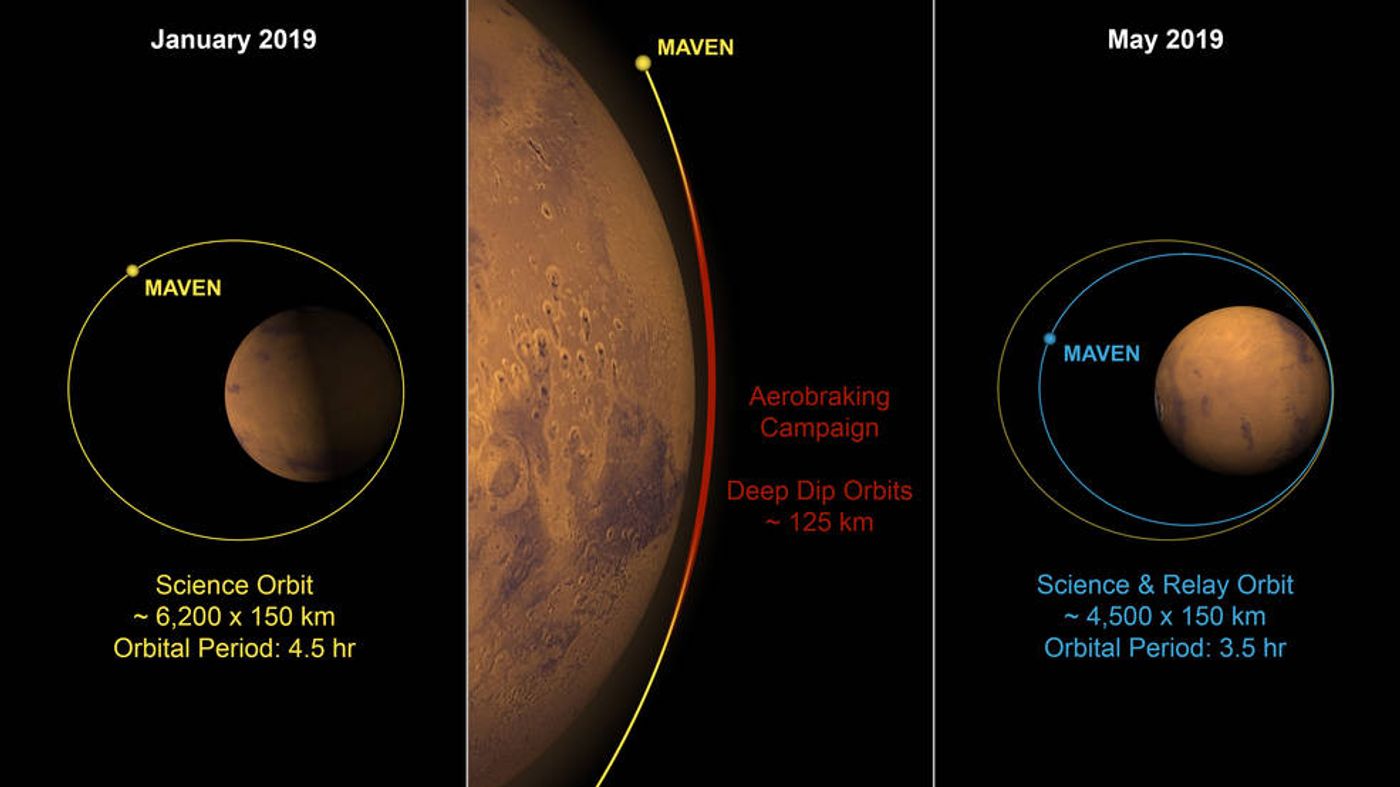NASA Tightening MAVEN's Orbit Around Mars in Preparation for Mars 2020 Rover
NASA launched its Mars Atmosphere and Volatile EvolutioN (MAVEN) mission back in November of 2013 with the intent of studying Mars’ upper atmosphere, ionosphere, and how our planetary neighbor responded to the Sun and the effects of solar wind.
Image Credit: NASA
MAVEN was initially estimated to sport a life expectancy of just two years, but it has well-outlived its purpose. It continues to operate soundly, and with NASA slated to launch its Mars 2020 rover next year, MAVEN is about to take on a new role as a full-time communications satellite.
In a public statement released Monday evening, the American space agency unveiled its plans to tighten MAVEN’s orbit around Mars such that it could act as a radio relay between NASA engineers and the Mars 2020 rover when the latter touches down on the red planet’s surface. The statement goes on to explain that the maneuver will reduce MAVEN’s highest point in its elliptical orbit from 3,850 miles above Mars’s surface to just 2,800 miles.
“The MAVEN spacecraft has done a phenomenal job teaching us how Mars lost its atmosphere and providing other important scientific insights on the evolution of the Martian climate,” said Mars Exploration Director Jim Watzin. “Now we’re recruiting it to help NASA communicate with our forthcoming Mars rover and its successors.”
Related: Meet the future landing site of the Mars 2020 rover
As it would seem, NASA’s reasoning for positioning MAVEN closer to the Martian surface is to improve wireless reception with the Mars 2020 rover when it begins exploring Mars. The space agency compares the scenario to using a cell phone, adding that being closer to your cellular tower improves signal strength and performance.
MAVEN will achieve its lower altitude by using a technique known as aerobraking. As MAVEN dips lower into Mars’ atmosphere, the spacecraft will experience a drag that slows it down; this drag will permit the probe to descend even more until NASA engineers are satisfied with its position.
Image Credit: NASA’s Scientific Visualization Studio/Kel Elkins and Dan Gallagher
Alternatively, NASA could fire MAVEN’s thrusters to achieve instant results, but that would waste precious fuel. The tried-and-true aerobraking method will take several months, but it’s more efficient than firing MAVEN’s thrusters to achieve the same result, and there’s plenty of time left before the Mars 2020 rover launches en-route to Mars.
“The effect is the same as if we fired our thrusters a little bit on every orbit, but this way, we use very little fuel,” explained MAVEN principal investigator Bruce Jakosky.
Related: Learn more about the advanced technologies that are packed into the Mars 2020 rover
NASA engineers have dipped the MAVEN spacecraft to low altitudes previously to capture measurements of and study Mars’ atmosphere, but this time MAVEN is expected to stay in its new position where it will work in tandem with the Mars 2020 rover for the rest of its days.
Source: NASA










